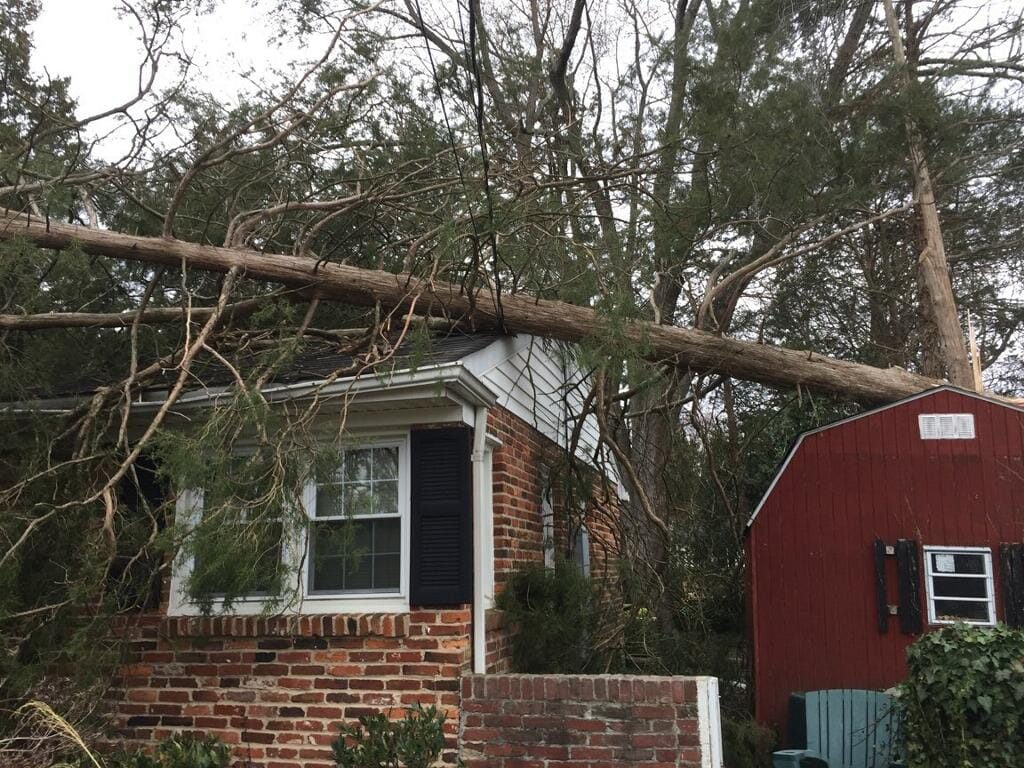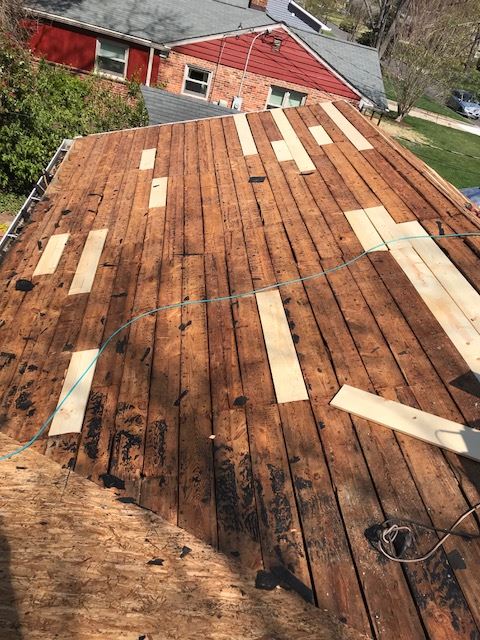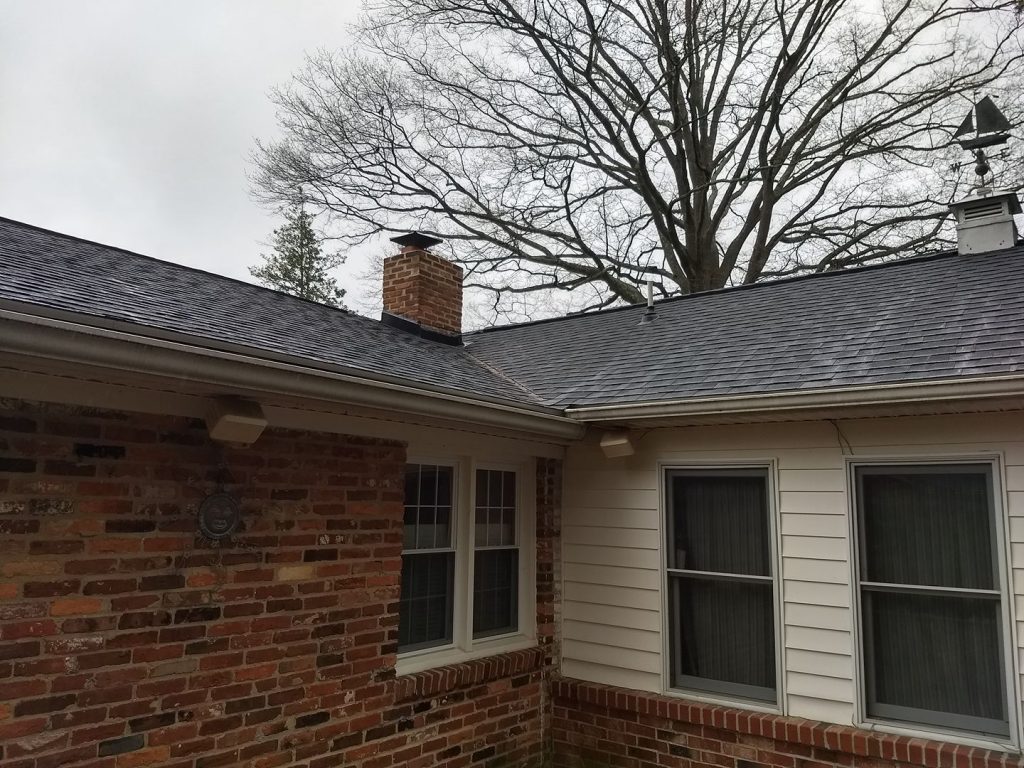A roofing adventure
I know a lot more about roofing than I did a few weeks ago. I have debated the merits of GAF Timberline vs. Certainteed shingles, considered whether I wanted matte black or charcoal black shingles on my roof, learned that the boards that go across the rafters of the original deck are called “planking,” and mulled the merits of synthetic underlayment vs. the traditional roofing felt. I also got to meet Edgar the brick mason, Adam the Roof Guy, some shady cold-callers who just showed up at the house, and a couple of other pretty decent guys whose companies I didn’t hire (but seemed perfectly trustworthy — I just had to pick somebody).
All of this started after the freak early March wind storm. During a big wind gust, one of the tall cypresses in my back yard snapped about eight feet up from the base and smashed into my shed and the roof of my house. That involved a good 20 feet or so of tree, but because it was a cypress (a skinny evergreen), there wasn’t nearly the weight that would have hit the house if I’d lost a big hardwood. Nonetheless, it punched a hole into the shed roof and several smaller holes into the house roof.

Well, we were planning to replace the roof this spring anyway. And the chimney, which was untouched by the tree, needed some patching.
Still, we had an immediate problem. This led to frantic calls to our regular tree service, our insurance company and pretty much any roofing company that would answer the phone. We called more than a dozen roofers before we found one who could come out — the combo platter of springtime roofing season and the massive windstorm created more work than the area roofers could handle — and a few days later, a roofer spent half an hour hammering maybe $100 (probably less) worth of roof underlayment over the holes for $600.
I wrote the check because I had to write the check, and insurance reimbursed me anyway, but that pricey visit came into play later when I called back the same company for a replacement bid. They were the high bid. I felt they were total pros. I was not confident they were charging a fair price, though, and that was that.
(Meanwhile, the heater died forever and another three grand floated away from our bank account, but that is another story for another time.)
I lined up a couple of more bid appointments. Meanwhile, my wife talked to a neighbor, who was going to get her roof replaced and just had her chimney worked on (exactly the same work I needed). She had talked to the general contractor down the street, and he recommended a mason and a small company that did a lot of roof work for him.
And thus, I wound up using Edgar the mason and Adam’s Roofing. Edgar stripped down and rebuilt the four feet or so of chimney brick that is exposed at my house, and I thought he did a terrific job. Meanwhile, Adam’s work was visible on houses all around the neighborhood, and it looked really good even years after it was installed. His bid was strong, too. I decided to go with him.
He used subcontractors for the roof and gutters, which gave me pause, but he said he’d been using the same roof sub crew for more than a decade. Let’s not kid ourselves anyway — most roofing work these days is done by subs, whether you like the concept or not, even if you hire a giant roofing company that runs ads all over radio and TV.
The roof crew did terrific work, including replacement of a lot of bad wood (220 feet of planking — I believe the last re-roof was done by the original homeowner, and a lot of the planking looked really rough from the attic). Here’s some of that — and this isn’t the side of the roof that got hit by the tree:

The finished product looked really good, too:

It’s been a couple of weeks now, and we’re about to get two days of rain. I’m pretty confident my new roof will pass that test. If the appearance is any indicator, I have nothing to worry about.

